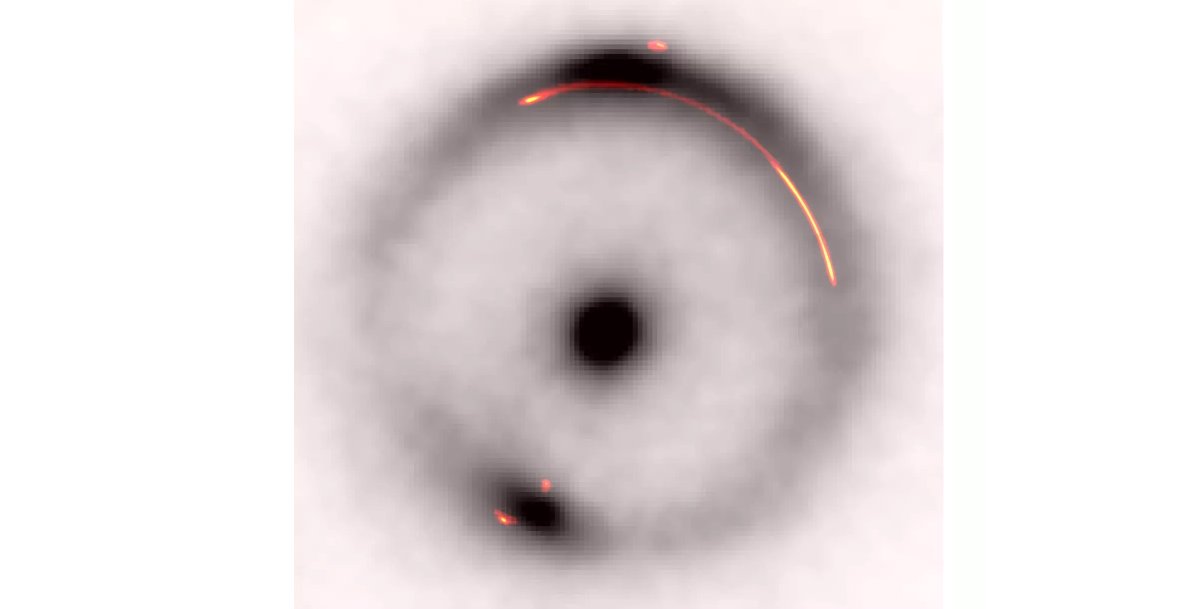
When astronomers first started finding “odd radio circles,” or ORCs, they were baffled. These faint, ghostly rings of radio light seemed to float in deep space, surrounding galaxies like cosmic smoke rings. Now, scientists have discovered the most powerful and distant one yet, and this one isn’t even circular.
The new object, named RAD J131346.9+500320, lies seven billion light-years away, from a time when the universe was just half its current age. It doesn’t just form one ring, but two, overlapping like a galactic Venn diagram. “ORCs are among the most bizarre and beautiful cosmic structures we’ve ever seen – and they may hold vital clues about how galaxies and black holes co-evolve, hand-in-hand,” said Dr. Ananda Hota of the RAD@home Astronomy Collaboratory and the University of Mumbai.
The discovery marks a breakthrough for both professional and citizen scientists. Volunteers from RAD@home first spotted the faint double halo in low-frequency radio data from LOFAR, the world’s largest low-frequency telescope.
The Cosmic Riddle of Double Rings
Each ring in RAD J131346.9+500320 stretches roughly 300,000 light-years across, surrounded by a faint glow nearly three times wider. The entire structure spans about a million light-years — or ten times larger than our galaxy. And it glows with the most intense radio power ever recorded for an ORC.
At first glance, it looks like an uneven smudge. But when astronomers enhanced the image, sharp edges appeared — two distinct, intersecting rings centered on a compact galaxy. The rings seem to trace out vast shells of relativistic plasma, the leftovers of ancient cosmic violence.
According to the study, the rings’ steep-spectrum radio emission suggests “aged synchrotron plasma, characteristic of relic emission rather than ongoing jet activity.” In other words, we’re seeing the afterglow of something that happened long ago — possibly a superwind or shockwave from a supermassive black hole at the galaxy’s center.
The team suspects that powerful winds blowing from the galaxy’s heart, perhaps after a black-hole merger, swept up clouds of magnetized gas and re-energized old radio lobes into these bright loops.
“A large-scale shock induced by a galaxy–galaxy or black-hole merger, or a powerful superwind, could compress a dormant radio lobe and reaccelerate its particles to be visible as rings or broken shells,” the authors write in the paper.
A Growing Family of Cosmic ‘Smoke Rings’

The discovery didn’t stop there. The same citizen-science team found two more massive radio rings in other galaxies. One, RAD J122622.6+640622, spans three million light-years and shows a jet that bends sharply, inflating a 100,000-light-year-wide loop. Another, RAD J142004.0+621715, features a smaller ring at the end of a slender, filament-like jet — “as if a black hole blew a smoke ring into space,” as one scientist put it.
Both galaxies sit inside enormous clusters, regions filled with searing-hot plasma that seem to sculpt these rings. “These discoveries show that ORCs and radio rings are not isolated curiosities — they are part of a broader family of exotic plasma structures shaped by black hole jets, winds, and their environments,” said Dr. Pratik Dabhade, co-author from the National Centre for Nuclear Research in Poland.
One striking aspect of this discovery is who found it: humans. That may not sound at all striking at first glance, but bear in mind the LOFAR telescope produces petabytes of radio data, and automated algorithms usually do the first pass. Yet machine learning missed the double ring entirely, flagging it as an “elongated double.” It took a trained citizen scientist to notice the faint circular glow and bring it to the team’s attention.
“The fact that citizen scientists uncovered them highlights the continued importance of human pattern recognition, even in the age of machine learning,” Dabhade said.
The RAD@home project, launched in 2013, trains volunteers — many of them students across India — to analyze radio and optical survey data. Using online “e-classes,” participants learn to overlay images, identify unusual structures, and discuss their finds with professional astronomers. Their efforts have already uncovered rare galaxies and new radio morphologies that escape AI detection.
What’s Next for the Odd Radio Circles?
Astronomers hope the upcoming Square Kilometre Array (SKA) and optical surveys like DESI and the Vera C. Rubin Observatory’s LSST will help map more of these ghostly rings. So far, only about a dozen have been confirmed, and their true nature remains one of the most puzzling mysteries in modern astronomy.
Some may be ancient black hole outbursts; others could mark galactic collisions or superwind-driven bubbles expanding through intergalactic space.
The universe, it seems, still enjoys showing off. And sometimes, it takes a human eye to spot its most extraordinary tricks.
The new findings were described in the Monthly Notices of the Royal Astronomical Society.
Source link

